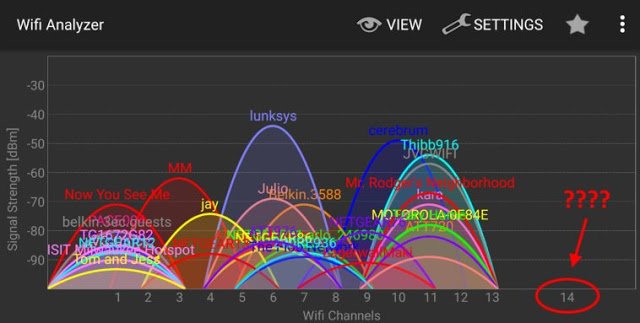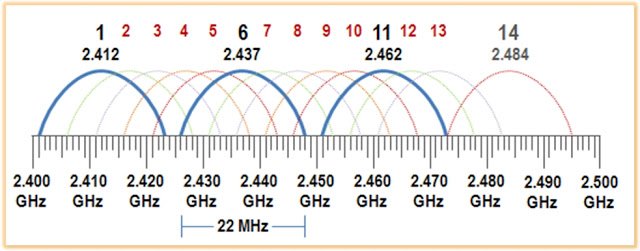"Channel 14" mysterious Wi-Fi, why you can not use? And why are they allowed only in Japan
A common problem among router users is the congestion of Wi-Fi channels. Many products and routers are responsible for changing the channels automatically to find the option with less interference with the rest of the other networks. The problem is when you choose a communication channel that you use for a network or other wireless networks, which weakens your connection to the Internet. The more congestion on the same channel, the worse is the connection to all networks, for example if your router selects channel 6 and is the same channel used Before the neighbors router here all the devices will be slow connection to the Internet, so what if the channel is used by 4 or 5 networks?
It is always recommended to change the channel so that there is no interference between the networks in the same place, but when you use the "Wifi Analyzer" to see the channel less used you will see a strange channel number 14, which is isolated from the rest, and there is no interference with Channel 11, So ... no one uses it. Why?
One of the first recommendations that every wireless user must follow to improve the performance of their connection is to change the Wi-Fi channel. In general, the number of available channels is 11. Technically, the 2.4 GHz band for Wi-Fi connections has three additional channels: 12, 13 and 14. Many European countries allow the use of channels 12 and 13 (albeit with difficulty), however, Channel 14 is almost unreachable, and I say "almost" because the only country with no major restrictions on the use of this channel is Japan. An important advantage to be highlighted around Channel 14 is that there is no interference with Channel 11. In other words, it is an excellent candidate to escape congestion with other networks. So ... why do not we use it?
The answer to this is "organization". The FCC considers Wi-Fi 14 as a restricted domain (military and / or commercial applications under the name ISM band), so public access is not allowed. If we look for more information about the current status of Channel 14, one of the first names we see is Globalstar, the provider of satellite phone services. Globalstar has received permission from the FCC to "recycle" in some way channel 14 and develop a low-energy ground service, but a group of companies including Google resisted this move and suggested public access to Channel 14.
But why are they available in Japan?
Channel 14 is legally available, although it is only for legacy systems under 802.11b, which limits speed to 11 Mbps.
Of course, many manufacturers of routers prevent access to these channels, but the good news is that you can follow the dear follower to activate this channel by installing an alternative firmware on the router such as DD-WRT. But the bad news is that there are only a few devices can connect to this network.



Done!